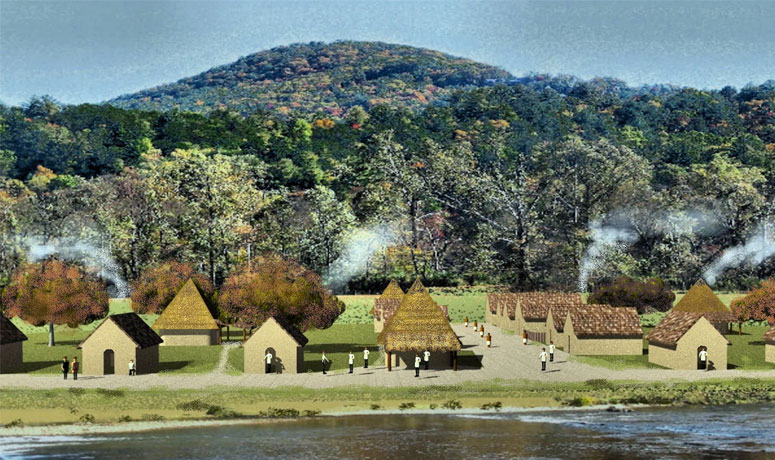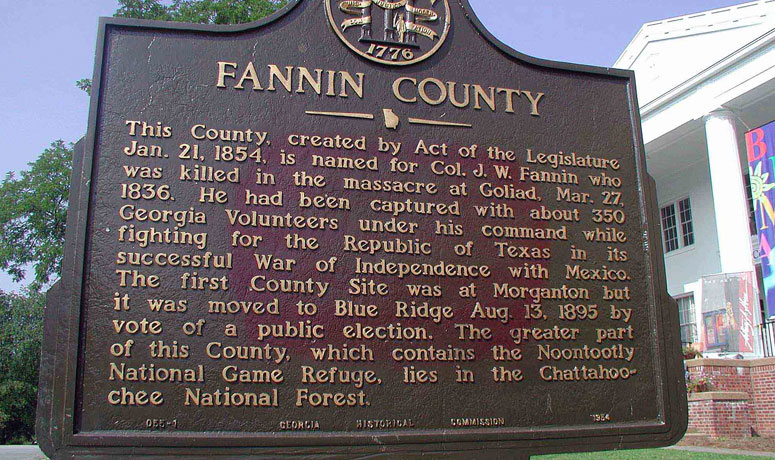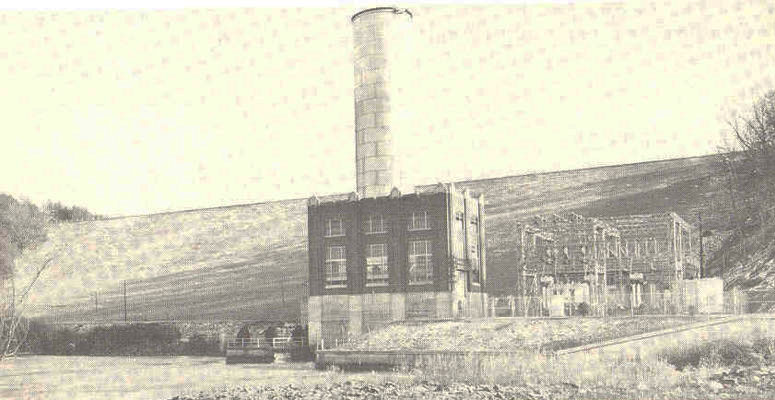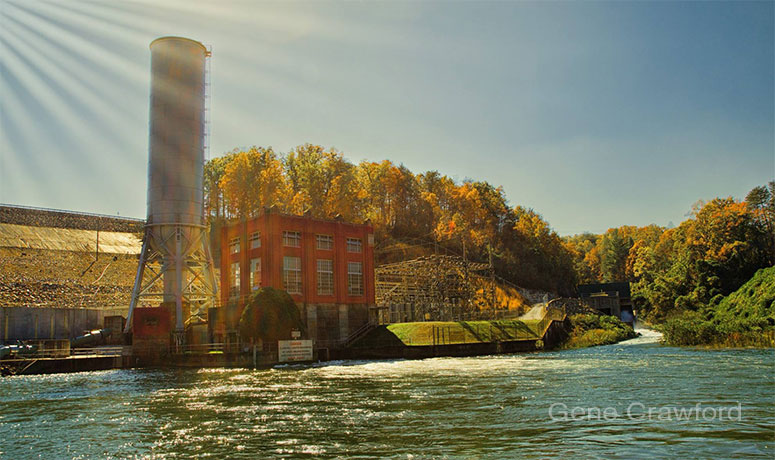Fannin County, Georgia was founded in 1854. The county was named in honor of James Walker Fannin, a war hero murdered on March 27, 1836. During the battle of Coleto in the War for Texas Independence he surrendered the 400 man regiment he commanded to General Jose Urrea, who had surrounded him. Under orders from commanding officer Antonio Lopez de Santa, Fannin was executed by Urrea along with virtually all his men.
Rivers provided much of the early transportation to settlers. To the west, the mighty Tennessee River had early settlers near Lookout Mountain. In Fannin County, the Toccoa (Ocoee in Tennessee) River was home to the first white settlers of the county, between Blue Ridge and McCaysville, GA in an area known as Galloway. Here, early settlers could supplement what they grew with fish taken from the nearby river.

Cherokee settlements were also common along the Toccoa River. North of Blue Ridge, Georgia are the remains of a rock wall built in a V-shape across the Toccoa River. These American Indians would stand at the center of the V and catch fish forced there by the current of the river. A couple of miles further along is a similar wall built by settlers.
The earliest mention of the area now known as Fannin County, Georgia is in the 1790’s when a preacher passed through the area and reported the residents as “..an intemperate bunch.” Fannin County began to attract many settlers shortly after the Revolution because of its mineral wealth and its access to a major river.

Much of Fannin County was included in the Georgia Land Lottery of 1832. That year Union and Gilmer counties were created from Cherokee County. Hundreds of Cherokee Indians who had long called North Georgia home were herded into makeshift forts and forced to leave on “The Trail of Tears.”
In 1853, shortly after the discovery of copper in the area of McCay (now McCaysville, GA), Benjamin Chastain introduced a bill to create Fannin from portions of Gilmer and Union counties, which passed and was signed by Gov. Hershel Johnson in Jan., 1854. The first elections were held the following month.
During the Civil War Fannin County had a number of pro-Union residents. These citizens often enlisted in east Tennessee. In the 1880’s rail service was established in Blue Ridge. The town was incorporated shortly thereafter. Over the next 8 years a bitter war of words raged between Morganton, the county seat, and Blue Ridge over the best location for the county government. In 1895 Blue Ridge won the battle when the state house and senate approved the change.
Fannin County has 4 distinct geophysical regions including the Blue Ridge Mountains, Jasper-Hightower Ridges, McCaysville Basin and the Cohutta Mountains.

Work on the dam on the Toccoa River east of Blue Ridge began in 1925. On July 1, 1931, newly created Lake Toccoa began producing power for the Toccoa Electric Power Company. In 1934 the name of the lake was changed to Blue Ridge. Today Lake Blue Ridge provides tourists for Fannin County, as do the Chattahoochee National Forest and the Cohutta Wilderness, part of the largest wilderness area east of the Mississippi River.

As late as the early 1980’s moonshine was product of these north Georgia hills. A major operation was found and destroyed by the ATF in 1983. In 1998 The Blue Ridge Scenic Railway opened on the original grade from Blue Ridge to McCaysville, GA along the Toccoa River.
